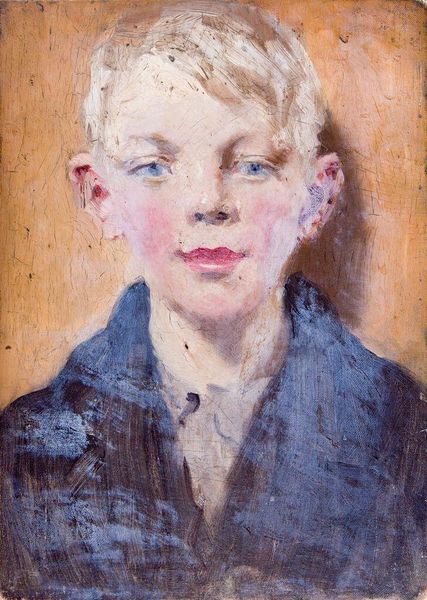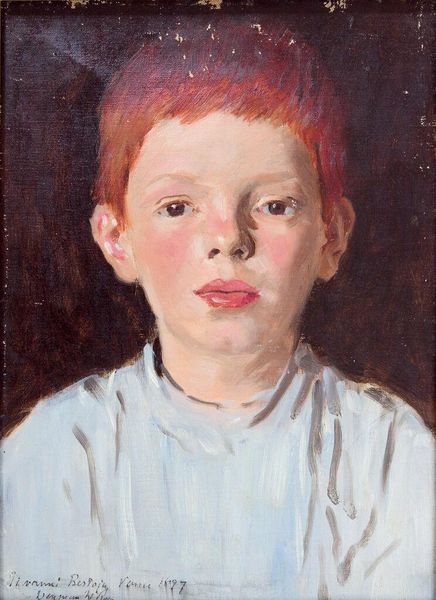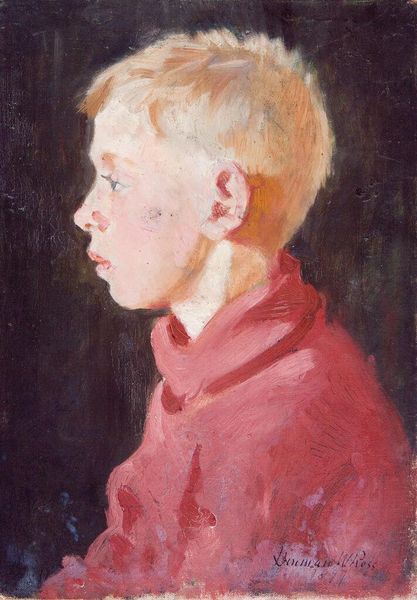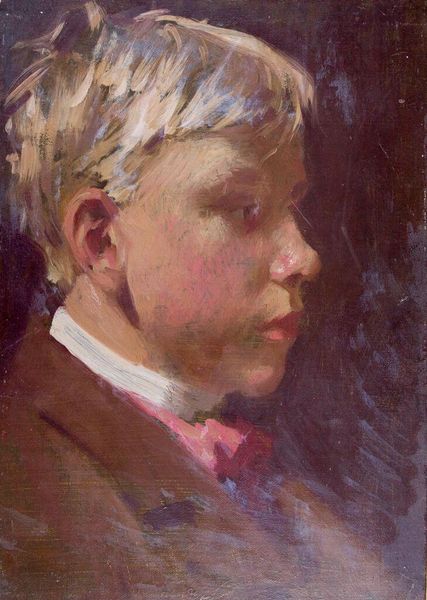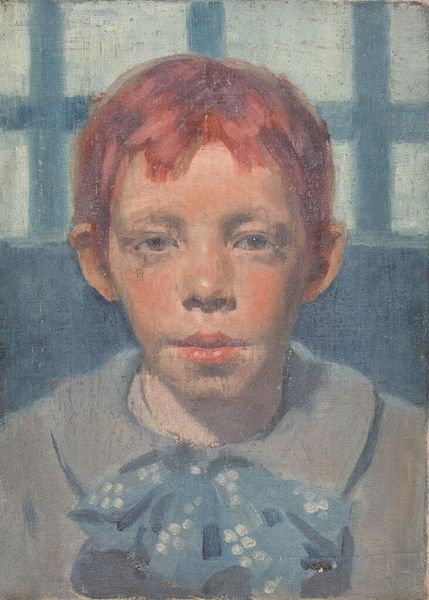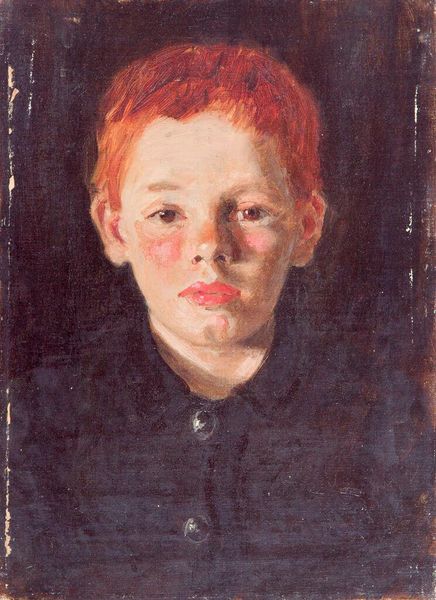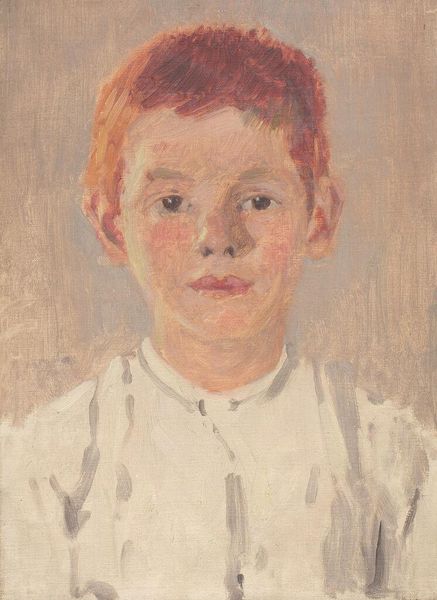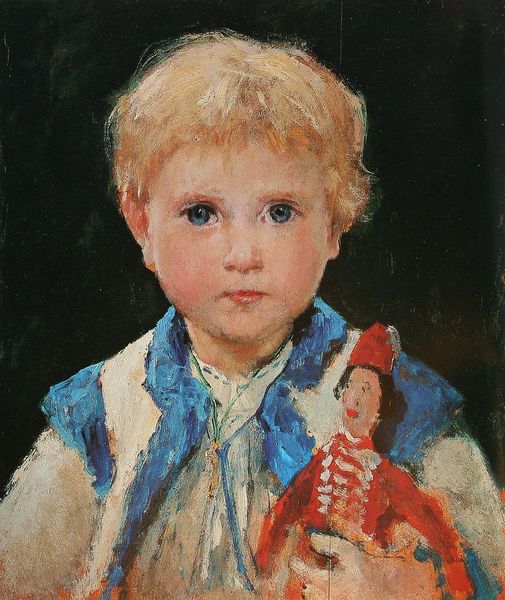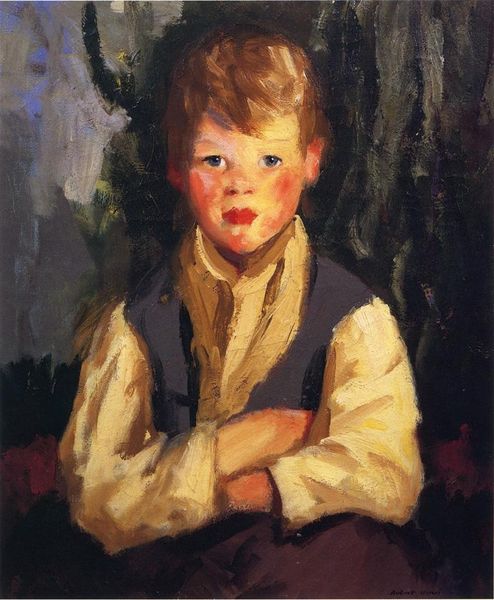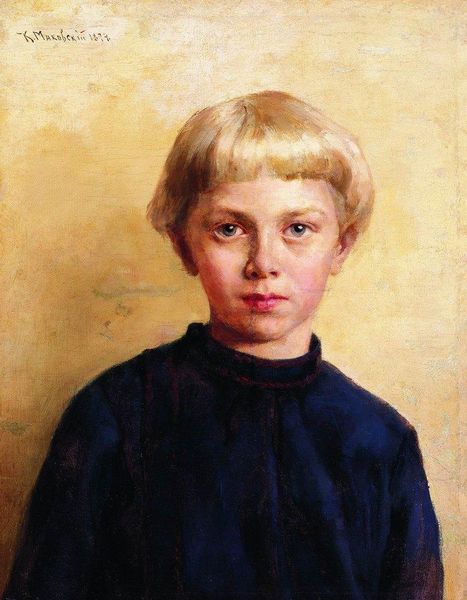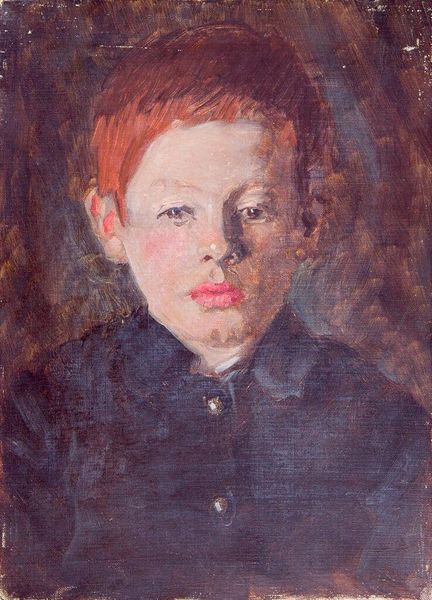
oil-paint
#
portrait
#
oil-paint
#
oil painting
#
academic-art
#
realism
Dimensions: length 50 cm, width 50 cm
Copyright: Rijks Museum: Open Domain
Editor: Here we have "Youth Portrait of Joseph Luns", created between 1914 and 1915 by Huib Luns, rendered in oil paint. It’s a rather straightforward portrait, yet something about the contrast between the boy’s fair hair and the dark clothing is quite striking. What elements of composition and technique do you find particularly compelling? Curator: Notice first how Luns employs a limited palette. The blond hair and skin tones, along with the subtle greens and browns in the background, create a network of analogous hues. This generates a serene, almost classical feel. What do you observe about the brushwork, the application of paint itself? Editor: The brushstrokes seem quite deliberate, almost controlled, especially in the face. The lace collar appears more loosely rendered, though. Curator: Precisely. This contrast in textures – smooth for the face, broken for the lace – adds visual interest and dimension. The painting is not photorealist; it instead utilizes the formal language of paint to depict form and surface. Editor: I see it now. The very texture of the paint becomes part of the subject, not just a means of representing it. It’s about the paint and canvas, and less about the individual portrayed. Curator: Exactly. And note how the background isn't clearly defined, suggesting an ambiguity of space. This isn't simply a representation; it's an arrangement of forms, colors, and textures interacting on the canvas. How would you say this impacts our viewing experience? Editor: It invites us to look more closely, to consider the painting as an object, a composition in itself. Curator: Indeed. The work's formal qualities offer a rich experience divorced from representational narrative or anecdotal background. Thank you, this reflection revealed nuances in Luns' approach, appreciating how structure shapes perception.
Comments
No comments
Be the first to comment and join the conversation on the ultimate creative platform.
